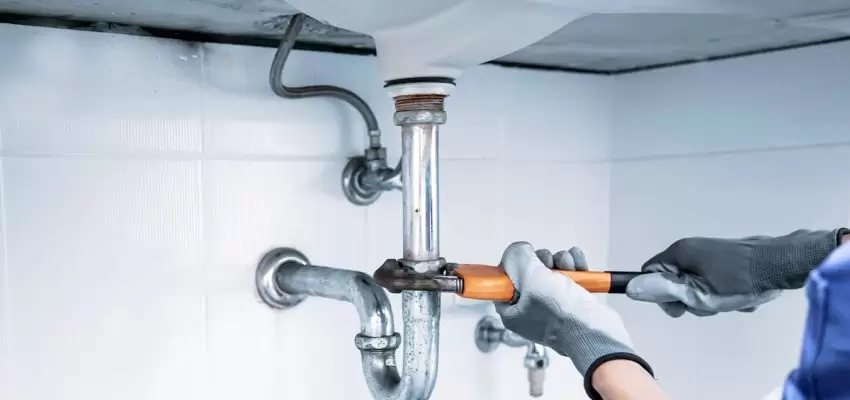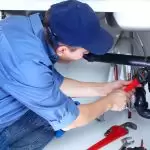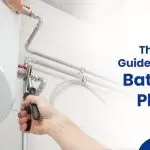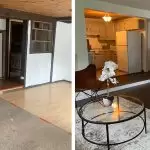Plumbing systems are an important part of any home, providing fresh water for drinking and domestic use, and removing wastewater and sewage. However, plumbing issues are rather common in Indian households due to factors like poor quality of plumbing infrastructure, lack of maintenance, water contamination, and more. Some of the most commonly faced plumbing problems in Indian homes are related to clogged drains and pipes, leakage issues, lack of running water, low water pressure, and faulty fixtures or appliances connected via plumbing. Identifying the exact problem and then finding the right solution is key to fixing plumbing troubles.
Post your Requirement
| Term | Definition |
| Plumber | A skilled tradesperson who specializes in installing, maintaining, and repairing systems used for plumbing, including pipes, fixtures, and appliances. |
| Plumbing Contractors | Businesses or individuals who offer comprehensive plumbing services, including installation, maintenance, repair, and sometimes design of plumbing systems. |
| Plumbing Contractors in India | Plumbing contractors operate within the geographical boundaries of India, providing their services to residential, commercial, and industrial clients in the country. |
| Plumbing Contractors for Home | Plumbing contractors specifically catering to residential clients, offering services related to home plumbing systems, such as installation, repair, and maintenance. |
This article discusses the major plumbing problems seen in Indian households and effective solutions for resolving them. Proper plumbing maintenance and minor fixes at the early stages can prevent escalation into major repair works and associated inconveniences.
Clogged Drains and Pipes
Clogged drains and pipes are amongst the most common plumbing headaches faced in Indian homes. Sinks, floor drains, and toilets getting choked up impede the wastewater flow and cause foul odors, leaks, flooding, backed-up sewage, and unhygienic conditions.
Causes:
- Accumulation of food scraps, oil/grease, hair, and soap residue.
- Tree roots entering and blocking external drainage pipelines.
- Flushable wipes and sanitary items dumped in toilets.
- Old pipes cracking and eroding from inside.
Solutions:
- Use strainers in sink drains to restrict solid items from entering pipes.
- Pour hot water, use a plunger/plumber’s snake to clear simple clogs.
- Use commercial drain cleaners and enzyme cleaners cautiously.
- Get professional drain cleaning or hydrojetting services annually.
Leaky Pipes and Faucets
Leaky pipes, joints, valves, and faucets are a prime contributor to water wastage and high water bills in Indian households. A small unrepaired leak can waste thousands of liters of water over time.
Causes:
- Ageing galvanized pipes and fitting developing corrosion and holes.
- Loose pipe connections/joints leading to cracks.
- Worn out washers, ‘O’ rings in taps and valves.
Solutions:
- Inspect the water supply system to identify leakage points.
- Tighten loose pipe connectors with a wrench.
- Replace damaged sections of pipe.
- Install new washers/valves to fix dripping faucets.
- Upgrade to advanced PVC or CPVC piping systems.
Low Water Pressure
Inadequate water flow from taps, showers, and water outlets despite functional motor/overhead tank is another issue, especially with overhead or rooftop water tanks.
Causes:
- Partially clogged pipes blocking free water flow.
- Air trapped in pipelines.
- Issue with pump/water supply motor.
- Incorrect pipe diameters to meet household demand.
- Leakages reducing effective water flow.
Solutions:
- Drain out air trapped in pipelines to stabilize flow.
- Check and replace worn-out pump/motor components.
- Correct pipe sizes for adequate water pressure.
- Install additional water tank and use booster pump for extra pressure.
No Water Supply
No water supply to taps and home appliances occurs due to complete pipeline blockages, non-working motors, empty overhead tanks, or municipal water supply issues. Total water shortage hampers everyday home functions.
Causes:
- Dried up municipal pipelines by water board authorities.
- Burst water supply pipes interrupting flow.
- Faulty foot valve, starter, or pump motor failure.
- Overflowing or emptied overhead tank.
- Non-payment of water bills.
Solutions:
- Check municipal supply status and pay overdue bills.
- Identify and cap busted sections in underground/overhead tanks.
- Unclog blocked valves/pipes preventing water intake.
- Repair malfunctioning pump motor components.
- Install level controllers to monitor overhead tank water.
Contaminated Water Supply
Contaminants entering aging corroded pipes or storage tanks make water unsafe for direct usage, despite clear appearance. Consuming polluted water causes serious health issues.
Causes:
- Rust, scale, and algae accumulating inside old iron/steel pipelines.
- Tiny leaks permitting external contaminant ingress.
- Dust, insects, and animals entering poorly covered tanks.
- Plumbing pipes and tanks near sewage lines.
Solutions:
- Clean or replace corroded pipelines.
- Identify and seal small leak points.
- Get microbial/chemical testing to check water contamination.
- Install water purification unit like RO system.
- Use watertight lids on underground/terrace tanks.
Malfunctioning Plumbing Appliances
Faulty operation or leaks from common home appliances like geysers, and washing machines connected via plumbing lines lead to wastage or flooding.
Causes:
- Sediment deposition and corrosion inside geysers.
- Failure of geyser thermostat, valves, or heating element.
- Issues with water inlet valves in washing machines/dishwashers.
- Clogged water outlet hose/pump in appliances.
Solutions:
- Flush geysers to clear sediment and scale.
- Replace damaged geyser spare parts.
- Install protective geyser rods against hard water.
- Check and replace broken appliance valves/pumps.
- Use high-quality reinforced washing machine hoses.
Conclusion
Due to factors like inferior infrastructure, lack of monitoring, old equipment, and water contamination; plumbing issues are ubiquitous across Indian households. Identifying and rectifying small problems before they assume severe proportions is a wise approach. Seeking professional assistance to upgrade critical plumbing infrastructure, regular upkeep of fixtures/appliances and safely accessible pipelines/tanks also aids in preventing and tackling common plumbing troubles. Equipping home plumbing infrastructure to meet usage demands while exercising water conservation is vital.























Post A Comment